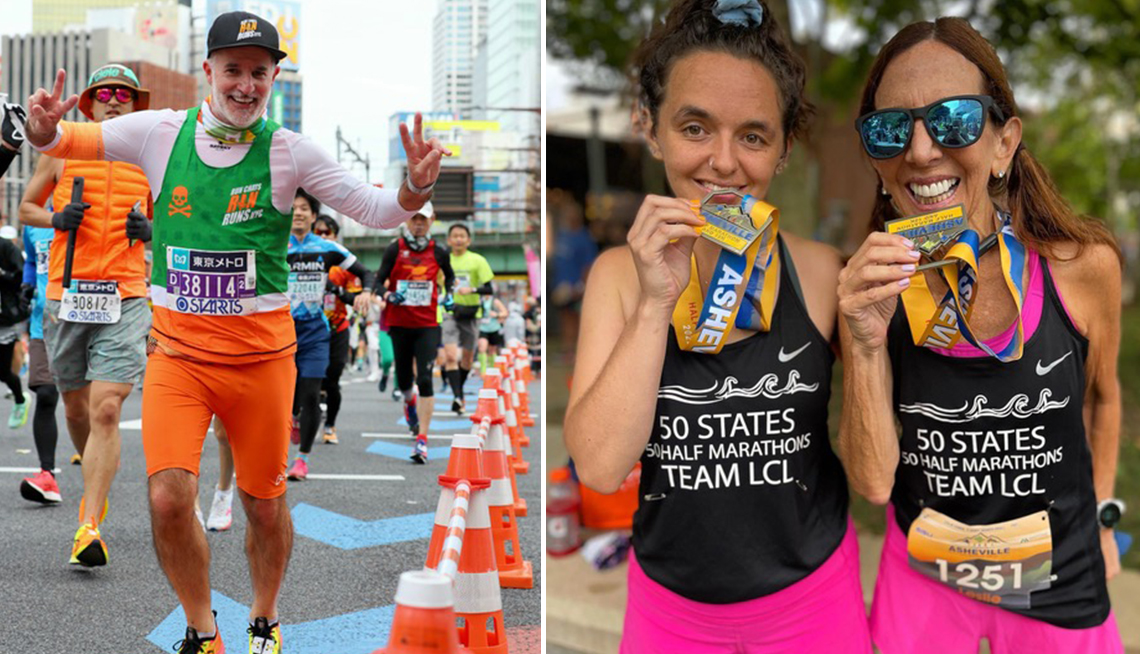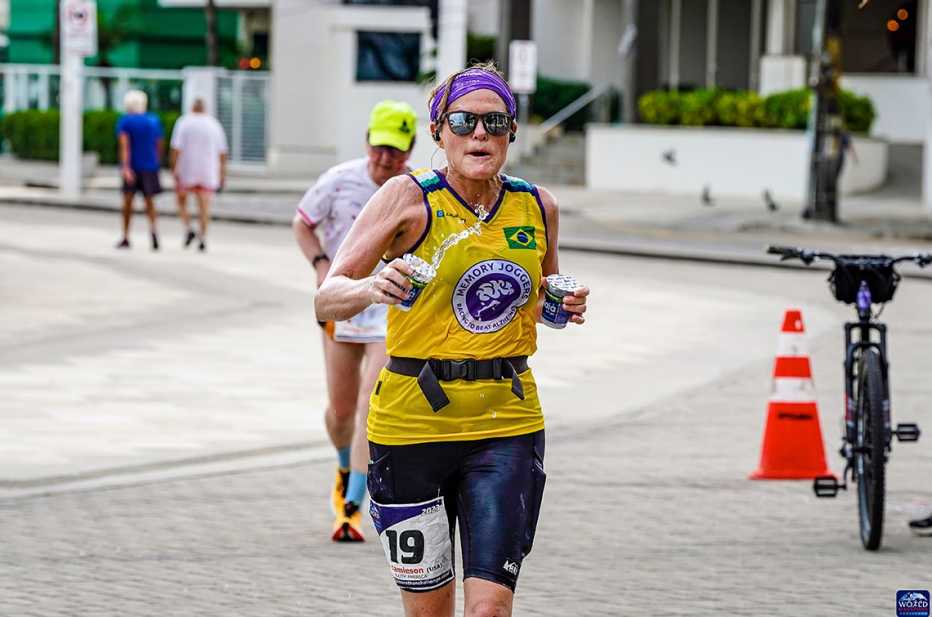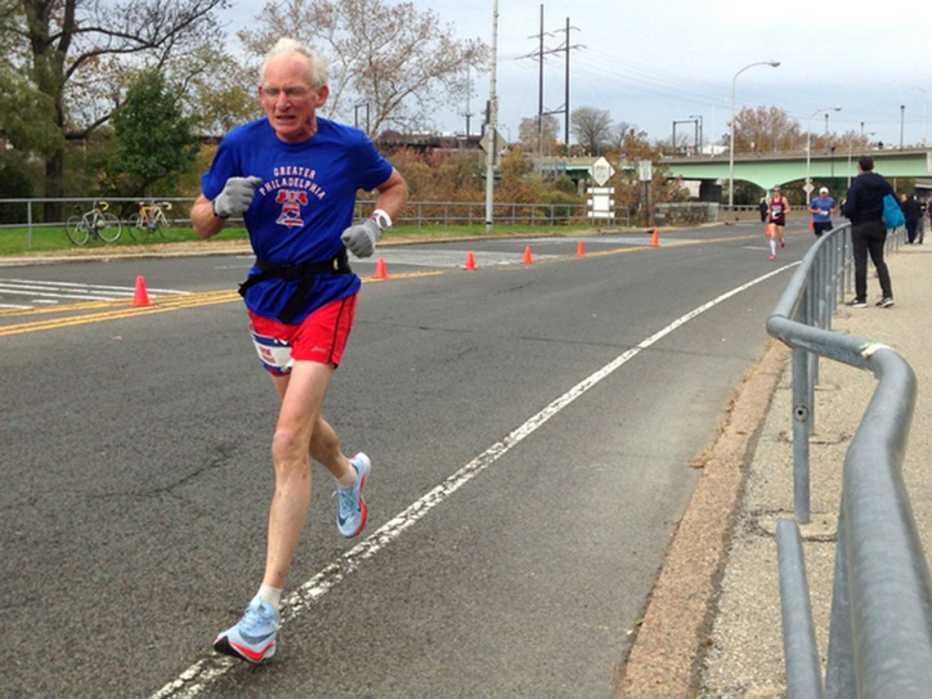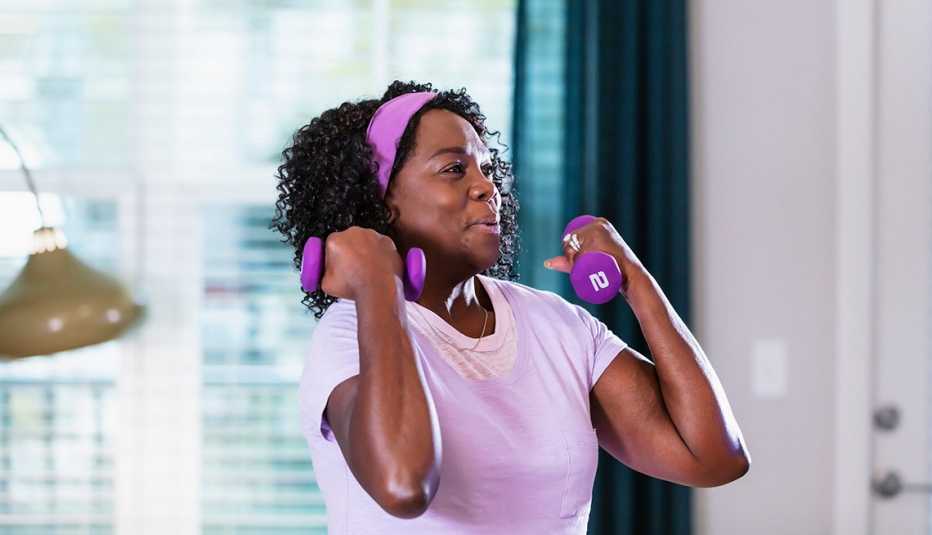AARP Hearing Center
The park-like grounds of the Imperial Palace in Tokyo’s Chiyoda Ward provide a rare oasis of open space in a crowded city of about 14 million. So it was there that visiting runners from around the world gathered two days before the Tokyo Marathon for a shakeout run.
After some confusion about which of the many historic gates was meant to be the meeting place, the group set out behind the man who had invited them to the event on social media and who seemed to be everywhere in Tokyo during marathon week.
He wasn’t a 20-something elite runner or an influencer working for an athletic apparel company or sneaker brand. He was a gray-bearded 62-year-old from New Jersey named Ron Romano.
“No question, everybody else in that group was younger. There really wasn’t anybody in my age range,” says the indefatigable Romano. “But I think they figured, ‘Let’s go to this guy’s shakeout. He seems fun.’ ”

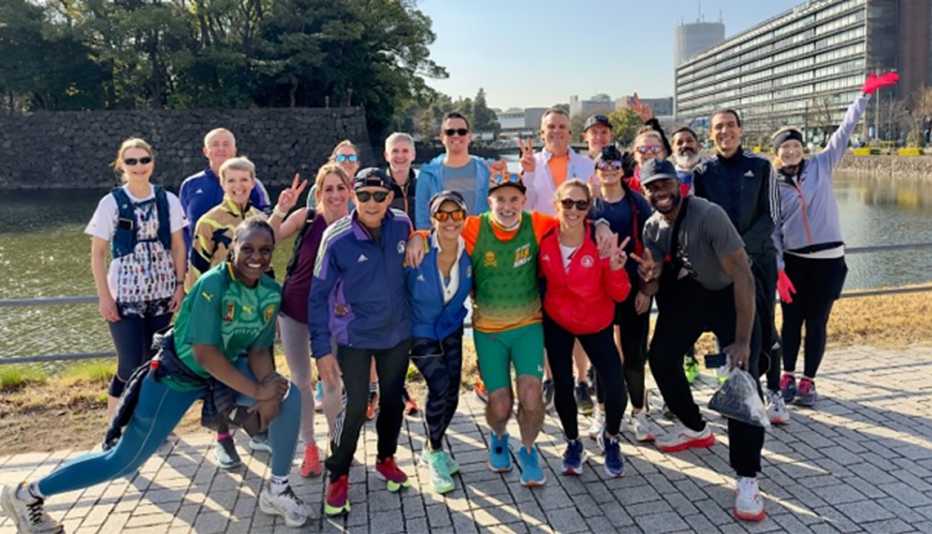
Romano exemplifies a trend of over-50s continuing to compete at high levels in marathons, triathlons and other endurance sports much later in life than in the past.
Many in Tokyo were achieving the milestone of having finished all six of the Abbott World Marathon Majors — the world’s top marathons, which also include Berlin, Boston, Chicago, London and New York. Romano was doing it for a second time.
The average age of these so-called six-star finishers in Tokyo was 50. The oldest man who’s finished all six marathons was 80; the oldest woman, 77.
“What do we even define as old any more? It gets harder and harder to tell,” says Romano, a health care executive who works out with a track club made up of runners in their 20s and 30s who wonder the same thing. “ ‘We can’t drop this guy on a tempo run?’ ” he says he hears them ask each other when they think he’s out of earshot.
Average age of runners rising
The average age of participants in running events is climbing fast, a study released last December by the industry association Running USA found, with big jumps over the last seven years in the proportion 55 and older.
The study also found only a slight increase in the proportion of runners who are 25 to 34 — cause for concern for race organizers, who worry that not enough young people are getting into running. But there’s also appreciation for the growing numbers of runners sticking with it (and continuing to pay the entrance fees) well into their 60s, 70s and 80s.
“They’re showing the longevity of this sport,” says Jeff Matlow, Running USA’s interim executive director. “People are realizing the value, the ease, the benefits of running as they’re getting older. And they’re sticking with it.”
Running USA participants by age group, 2015-2022

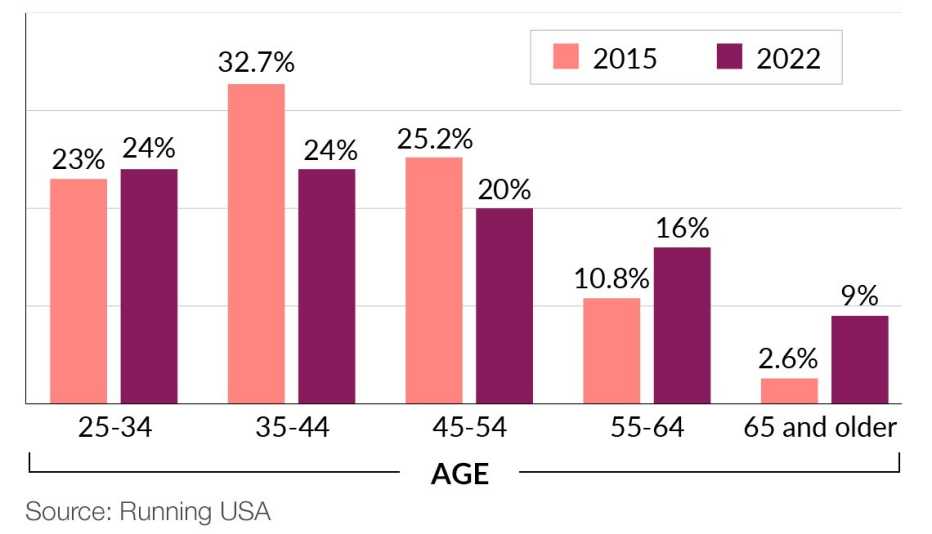
Multiple marathons runners
Older runners may be better positioned to accomplish goals such as running all six marathon majors. That’s because aspirations like this can take decades to achieve — it can take years to get into some of these marathons, which are held only once a year, and many of which were canceled during the pandemic — and it’s time-consuming and expensive to travel to the far-flung destinations where the races happen.
Running can be good for the physical and mental health of people as they age, says Dawna Stone, CEO of the Abbott World Marathon Majors.































































